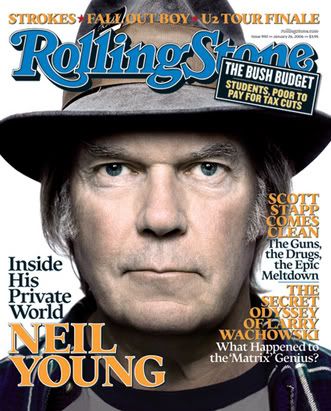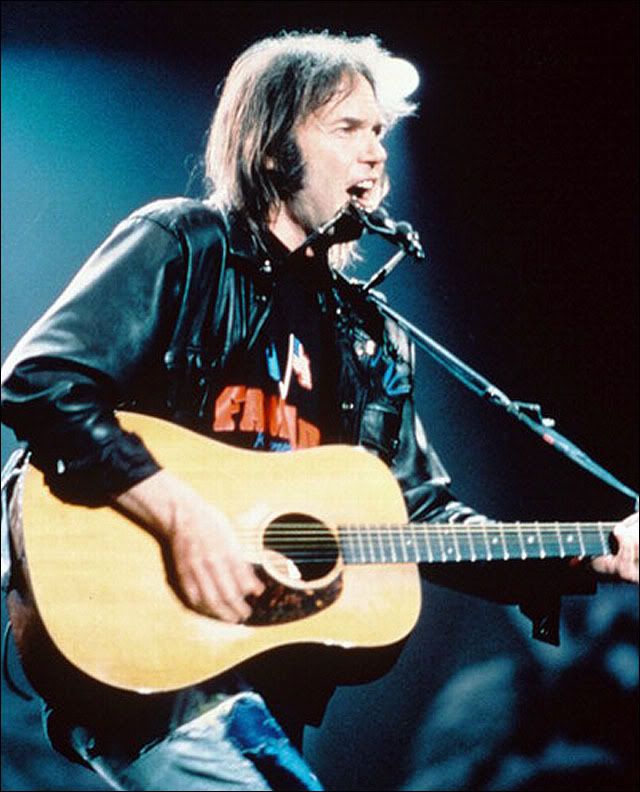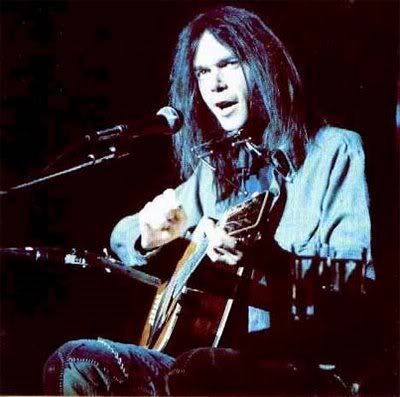Wednesday, January 14, 2009
3 song analysis
My first song isn’t really in my theme-genre, but, it’s still a great song, so I’m going to go with it anyway. The song is “Letters from Home” by John Michael Montgomery. This song is about a soldier off fighting in a war. All the while he is receiving letters from his family back home. (Hence the name) Throughout the song, he shows the letters to all of his friends, and it’s an escape away from the war for the time being. The letters keep him able to go on strong.
In the first verse, he receives a letter from his mom. She goes on about normal banter, and then mentions his dad. We get the feeling that his dad was upset about him going to war because of what she says. “Your stubborn 'ol Daddy ain’t said too much, but I’m sure you know he sends his love”. She explains that his dad is handling his going away not very well, because he pretty much hasn’t said anything about it since he went away.
In the chorus, we find that his company has gotten to be about as close as brothers. He shows all his friends the letter and they forget about the war for a little while. “I hold it up and show my buddies, like we ain’t scared and our boots ain’t muddy, and they all laugh, like there’s something funny bout’ the way I talk, when I say: "Mama sends her best y’all"”. They laugh at how he’s from the south and has the southern accent, then, when the letter is all read, they get right back to being soldiers.
In verse two, the letter is from his fiancé. This time, she tells him that she showed his mom the ring and revealed their, until then, secret engagement. She also says that when the television says soldiers have died, she gets uneasy and cannot sleep. Yet, she knows that it’s just her nerves getting to her. Then says how much she misses him. “I’ll be all right, I’m just missing you An' this is me kissing you, XX’s and OO’s”. The chorus following says how when he reads this letter, he leaves out all the good parts, like the mushy ‘I love you’. “And they all laugh, 'Cause she calls me "Honey", but they take it hard, 'Cause I don’t read the good parts”.
In the last verse, (kinda a tear jerker), his dad finally writes to him. His dad tells him how proud of him he really is. “Dear Son, I know I ain’t written, But sittin' here tonight, alone in the kitchen, it occurs to me, I might not have said, so I’ll say it now, Son, you make me proud”. In the last chorus, no one laughs when he reads this letter, which is because he cries. The reason is that his dad finally tells him that; although he hasn’t written or said anything to him, he really is proud of him for going into the war to defend his country. “But no one laughs, 'Cause there ain’t nothing funny when a soldier cries. An' I just wipe me eyes”. We also know that the letters are what keeps him going, because he waits to hear from his family to know what is going on back home with everyone that he cares about. “I fold it up an' put it in my shirt, pick up my gun an' get back to work, an' it keeps me driving me on, waiting on letters from home”.
Together, this song evokes a lot of emotion, especially to those with loved ones in the war. The song also has a bit of imagery, in how you can imagine a bunch of soldiers getting together to read their letters. You can almost feel the emotions of the soldiers as well. The artist also has his own dialect throughout the song.
_____________________________________________________________________________________ SONG 2
Boy:]
But when you touch me like this (touch me like this)
And you hold me like that (hold me like that)
I just have to admit that it's all coming back to me
When I touch you like this (touch you like this)
And I hold you like that (hold you like that)
It's so hard to believe but it's all coming back to me now
Monday, November 10, 2008
One of my favorite songs by this band is ‘Spirit of the Sea’. The song follows my genre of loss because it is about a girl who finds someone to love, and loses him the same day. Every day, she walks around the sea shore, remembering him. It’s almost as though when she’s there, he’s always with her. “I saw a man I'd seen before
As I approached he slipped away...” When she is at the shore, she swears that she can see him, but when she tries to go see him, he slips away from her, reminding her that he is gone. “I knew his face from years ago, His smile stays with me ever more. His eyes, they guide me through the haze. And give me shelter from the storm...” She feels that whenever she’s by the sea, he is there with her in spirit. She feels him all around her, and knows he’s there watching over her. “As I walk I can feel him, always watching over me... His voice surrounds me, my Spirit of the Sea...”
The day she found him, she lost him. He went away to a place, very far away. On that same day, he died, taking away all chance of being with him in life. “He went away so long ago, On a maiden voyage far away. A young man then I did not know,
his life was taken that same day..” at the time, she barely knew him, but knew that there was something there. “‘And it was almost like he knew He wouldn't see me anymore. He looked so deeply in my eyes, and said "Wait for me along the shore...’” He asked her to wait for him, which is why she spends her time by the sea. He somehow knew that they’d never meet in life again, so he told her to wait for him. “And so I come most every day, to watch the waves rise and fall.”
She know that they’ll meet again in the end, so she will always wait for him, continuing to spend her time at the shore. No matter what’s going on in her life, she goes to the ocean, looking for his guidance. “But I feel my lover by my side, and he makes me follow my own heart. We'll be together some sweet day. When that day comes we'll never part...” When her life is over too, she knows that they’ll be reunited to spend an eternity together.
The song is full of imagery, where you can imagine a girl sitting by the ocean, watching the waves. You can almost see the waves crashing, which is helped by the sound of the ocean at the start of the song. When she sees his spirit, in your mind, you can almost imagine her sadness when she realizes that he isn’t really there. The song can also have the effect that you can almost feel her emotions. Through the powerful wording, you can almost feel her pain.
Thursday, September 25, 2008
Loss and Joy in Folk Rock - Song Analysis
Ghost of a Rose, by Blackmore’s Night, is a song full of imagery. The song is about a girl who finds her true love and then eventually has to part with him.
“The valley green is so serene, in the middle of a stream so blue.” This line from the first verse paints the image of a beautiful place in your mind. “A maiden fair in despair once had met her true love” The image here is of a beautiful woman falling in love.
“Promise me when you see a white rose you’ll think of me. I love you so, never let go. I will be your ghost of a rose.” Traditionally, a white rose can have two meanings, first, innocence; second, they have white roses at funerals as a symbol of the loved one passed on, because it means memory. Here, it stands for memory. When they must part, she wants him to remember her every time he sees one.
“Her eyes believed in mysteries. She would lay amongst the leaves of amber. Her spirit wild, heart of a child; but gentle still quiet and mild and he loved her.” Here we find the meaning of the white rose to be innocence. We get the image of a young woman who is still innocent, like a child.
“When all was done, she turned to run; dancing to the setting sun as he watched her.” We get the image of her having to part with him, but still joyously dancing to the setting sun. “And evermore he saw a glimpse of her among the moors forever.” Even when she was gone, he’d always see her in his memories. “He’d hear her say, ‘Promise me, when you see, a white rose you’ll think of me. I love you so, never let go, I will be, your ghost of a rose.” Always, her voice played in his mind, wishing him to never forget her.
In summary, Blackmore’s Night uses imagery to enhance their song Ghost of Rose. This song also depicts the theme of joy and loss within its lyrics. Thus showing how the creation of this song was to make the audience see the images in their minds and understand the theme of the song clearly.
The valley green was so serene
In the middle ran a stream so blue...
A maiden fair, in despair, once had met her true love there and she told him...
She would say...
"Promise me , when you see, a white rose you'll think of me
I love you so,
Never let go,
I will be your ghost of a rose..."
Her eyes believed in mysteries
She would lay amongst the leaves of amber
Her spirit wild, heart of a child, yet gentle still and quiet and mild and he loved her...
When she would say...
"Promise me , when you see, a white rose you'll think of me
I love you so,
Never let go,
I will be your ghost of a rose..."
When all was done, she turned to run
Dancing to the setting sun as he watched her
And ever more he thought he saw
A glimpse of her upon the moors forever
He'd hear her say...
"Promise me , when you see, a white rose you'll think of me
I love you so,
Never let go,
I will be your ghost of a rose..."
Wednesday, September 17, 2008
Neil Young


January 23, 1969: In the wake of Buffalo Springfield’s demise, Neil Young releases his self-titled first solo album, which fails to make Billboard’s Top 200 album chart
May 27, 1969: Only five months after his debut album, Neil Young releases ‘Everybody Knows This Is Nowhere,’ the first of many with Crazy Horse.
March 17, 1970: ‘Deja Vu,’ by Crosby, Stills, Nash and Young, is released. With the addition of Neil Young giving the band a more electric edge, the album goes to #1 and sells more than 7 million copies.
September 16, 1970: Neil Young’s third solo album, ‘After the Gold Rush,’ is released. It peaks at #8 and yields a major hit, “Only Love Can Break Your Heart.”
March 11, 1972: Neil Young’s fourth solo album, ‘Harvest,’ tops the album charts for the first of two weeks. Having sold more than 4 million copies, it remains his best-selling album.
March 18, 1972: “Heart of Gold,” by Neil Young—and featuring Linda Ronstadt and James Taylor on harmony vocals—tops the singles charts.
May 3, 1972: “Old Man,” by Neil Young, peaks at #31 on the pop chart. It is the third and last time Young will crack the Top Forty
October 14, 1973: ‘Time Fades Away’, the first of three consecutive Neil Young albums that break with the mellow sound of the best-selling ‘Harvest,’ is released.
August 15, 1974: Neil Young taps into the spirit of Seventies malaise with ‘On the Beach,’ which ‘Rolling Stone’ calls “the most despairing album of the decade.”
July 16, 1975: Neil Young’s ‘Tonight’s the Night,’ inspired by and dedicated to a pair of musical acquaintances who died of drug overdoses, is released.
December 17, 1977: ‘Decade,’ a triple-album Neil Young retrospective personally assembled by the artist, is released.
October 18, 1978: ‘Comes a Time’, by Neil Young, is released. One of Young’s most personal and intimate works, it peaks at #7 – a chart showing surpassed only by 1972’s Harvest (#1) and 1995’s Mirror Ball (#5)
July 19, 1979: ‘Rust Never Sleeps,’ by Neil Young, is released. It peaks at #8 and is certified platinum (one million sales) a year later.
November 19, 1981: ‘Re-ac-tor,’ Neil Young’s 16th and final album for Reprise Records – until his return to the label in 1988 – is released.
January 13, 1983: Neil Young kicks off his association with a new label, Geffen Records, with ‘Trans,’ an album of heavily synthesized, computer-generated songs interspersed with breezy love songs. It reaches #17, his best showing until ‘Harvest Moon’ peaks at #16 in 1992.
September 20, 1985: ‘Old Ways,’ a straightforward country-flavored album by Neil Young, is released.
April 21, 1988: Marking his return to Reprise Record, Neil Young releases ‘This Note’s for You,’ a bluesy, swinging album featuring a full horn section.
September 6, 1989: MTV presents “The 1989 MTV Video Music Awards” live from the Universal Amphitheatre in Los Angeles.” Arsenio Hall is the host and Neil Young’s “This Note’s For You” takes home Video of the Year.
September 22, 1989: Neil Young releases ‘Freedom,’ his best album in a decade. A blistering performance of the opening track, “Rockin’ in the Free World,” on ‘Saturday Night Live’ is regarded as one of that show’s best performances.
September 23, 1990: ‘Ragged Glory,’ an electric return to form by Neil Young and Crazy Horse, is released.
October 24, 1992: Twenty years after the release of his milestone ‘Harvest,’ Neil Young issues a sequel, ‘Harvest Moon.’ It becomes his first million-seller since 1979’s ‘Rust Never Sleeps.’
July 15, 1993: Neil Young’s ‘Unplugged’ CD and video are released. Recorded on February 7th in Los Angeles and first aired on MTV in March, it is an all-acoustic 14-song set.
March 21, 1994: Neil Young’s Grammy-nominated “Philadelphia,” from the AIDS-themed movie of the same name, loses to Bruce Springsteen’s “Streets of Philadelphia’ (also on the soundtrack), for Best Song from a Motion Picture.
July 25, 1994: Neil Young releases ‘Sleeps With Angels,’ whose harder-edged sound nods to Seattle grunge-rockers and pays tribute to the late Kurt Cobain.
January 12, 1995: Neil Young is inducted into the Rock and Roll Hall of Fame at the tenth annual induction dinner. Eddie Vedder of Pearl Jam is his presenter.
May 26, 1995: Neil Young’s ‘Mirror Ball,’ an album recorded in Seattle with Pearl Jam, is released.
May 27, 1996: ‘Broken Arrow,’ which reunites Neil Young with Crazy Horse, is released.
April 25, 2000: Neil Young releases ‘Silver & Gold,’ one of his most intimate and personal albums.
November 21, 2000: ‘Road Rock Volume 1,’ a live album credited to Neil Young, Friends & Relatives, is released.
- Neil's father gave him a ukelele for Chrisrmas when he was just a young boy.
- He can be compared to Tom Petty and The Byrds
- He is influenced by Woody Guthrie, Bob Dylan, and The Beetles
- His mother was a quiz show panelist
- His father was a sports writer for the 'Toronto Sun'
- He has been in multiple bands, other than being a solo artist
- His long feedback-filled solos owe a debut to Jimi Hendrix, in spirit if not strictly in style
- His ride became bumpy in the Eighties, due to his switch from Reprise to Geffen Records
- In 1985' Young performed at the Live Aid fundraising extravaganza and thenbecame one of the organizers and participants in Farm Aid, a yearly concert and consciousness-raising event
- Him and his wife, Pegi, founded San Francisco's Bridge School, a learning center for handicapped children with communication disabilities

Neil Young - Cinnamon Girl Video



